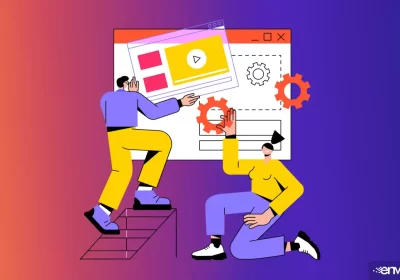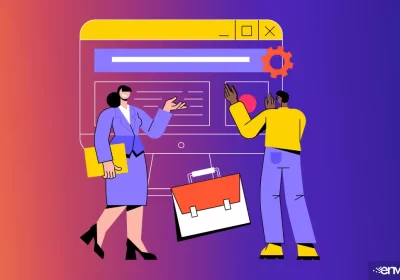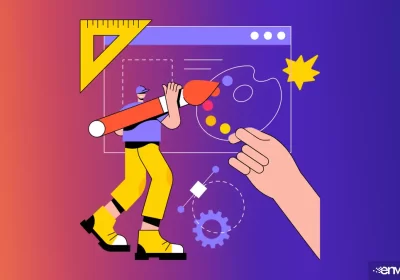6 Reasons Why People Leave Your Website

Do you know why people leave your website?
In the age of relevant search results, when people leave your website immediately after landing on it, is not good news. Interest and attention is scarce on the Internet. There are literally hundreds of thousands of websites vying for the same types of users. So, when you’ve peeked the interest of users and they are making the effort to visit your website, it’s important to provide them what they want.
Here are 6 reasons why people leave your website:
1. People Leave Your Website Because It’s Not Responsive
Slowly but surely, Google has been notifying sites that are migrating to mobile-first indexing via Search Console. Mobile-first indexing means Google will use the mobile version of your site for indexing and ranking to better help mobile users find what they’re looking for. Historically, the desktop version of a site was indexed.
As technology continues to modernize our daily life, a great number of online engagement and social media is generated via mobile. Today, 68% of U.S. adults have a smartphone. People are busy and would like as many things as possible to be easily accessible – including online information. If your website is not responsive (content adapts to the device being viewed on), it’s going to be difficult to navigate.
When users can’t see your site proportionally in their screen, causing them to constantly pinch and zoom, they will definitely move on to your competitor’s site that IS responsive. Responsive design not only provide your visitors with a great user experience, but it’s highly recommended by Google. I say ‘recommended’, but you should consider it as rule of web design if you’re hoping for any type of rankings in search results.
You should definitely consider making your site responsive as a non-responsive site is one of the major reasons why people leave your website.
2. Outdated Website Design
If your website looks worn and old, it’s definitely time for a refresh. An updated look could entice a user to stay on your site a bit longer. Over 50% of visitors will spend fewer than 15 seconds on your website before they click away. This means you have less than a minute to capture their attention. Utilize this small window of opportunity to present them with information that will be useful in getting them interested in your brand. While many fashion trends make a comeback, this is not the case with a website design. Your visitors are looking for something fresh and modern. Remember, web design is constantly evolving.
3. Videos Set To Autoplay
Not only are autoplay videos annoying, but they can cause an interruption to browsing. Imagine listening to your favorite music on your phone while visiting a website that has a video automatically playing. The sounds from the video will unexpectedly conflict with other sounds you’re listening to. Your first instinct is to click away from that website as quickly as possible.
If visitors are prevented from doing what they came to your website to do (purchase, read articles, etc), the chances are you have just lost them. When you check your website stats, you may find that pages with autoplay video are counterproductive to generating traffic to your site.
4. Slow Loading Website
How fast your website loads is a significant factor for its success. You may have a modern website with all right information, but if it takes longer than three seconds to load, users are not going to stick around. While three seconds may not seem like a lot of time, you have to consider the expectations of your visitors. They are expecting to see something immediately upon visiting your site.
Google offers handy PageSpeed Tools that’s helpful in providing insights on how you can fix your pages that lack speed.
5. No Contact Page
If your website offerings have successfully interested potential customers, many will have questions that are specific to their needs. If there is no contact page to send you a message for additional information, how do they get in touch? Believe it or not, there are websites that have no tools for contacting their business. Always make sure your website contains some type of communication. Whether it’s a contact page, phone number, chat, etc.
6. Confusing Navigation Structure
Have you ever visited a website and you can’t figure out which menu link you clicked to get to the page you’re on? Did you click medical services or was it cosmetic treatments? Oh, no! Where am I? If you can feel the confusion from reading this, imagine the frustration and confusion your users feel. It like driving somewhere with dubious directions. Your main navigational menu should be well-structured and your pages should have clearly defined titles.
Visit websites as if you’re the customer looking for something. Check out what you like best about these sites and what you find helpful when browsing online. Then incorporate it into your own website if it’s suitable for your industry, brand, product or service.
You may also enjoy reading: 7 Different Internet Marketing Strategies

Hazel Burgess
FOUNDER/SEO DIRECTOR
Hazel is the Founder & SEO Director at Envisager Studio, a premier website design agency specializing in WordPress website design, development and internet marketing. In her spare time, she writes about search engine optimization, website design, and internet marketing.


